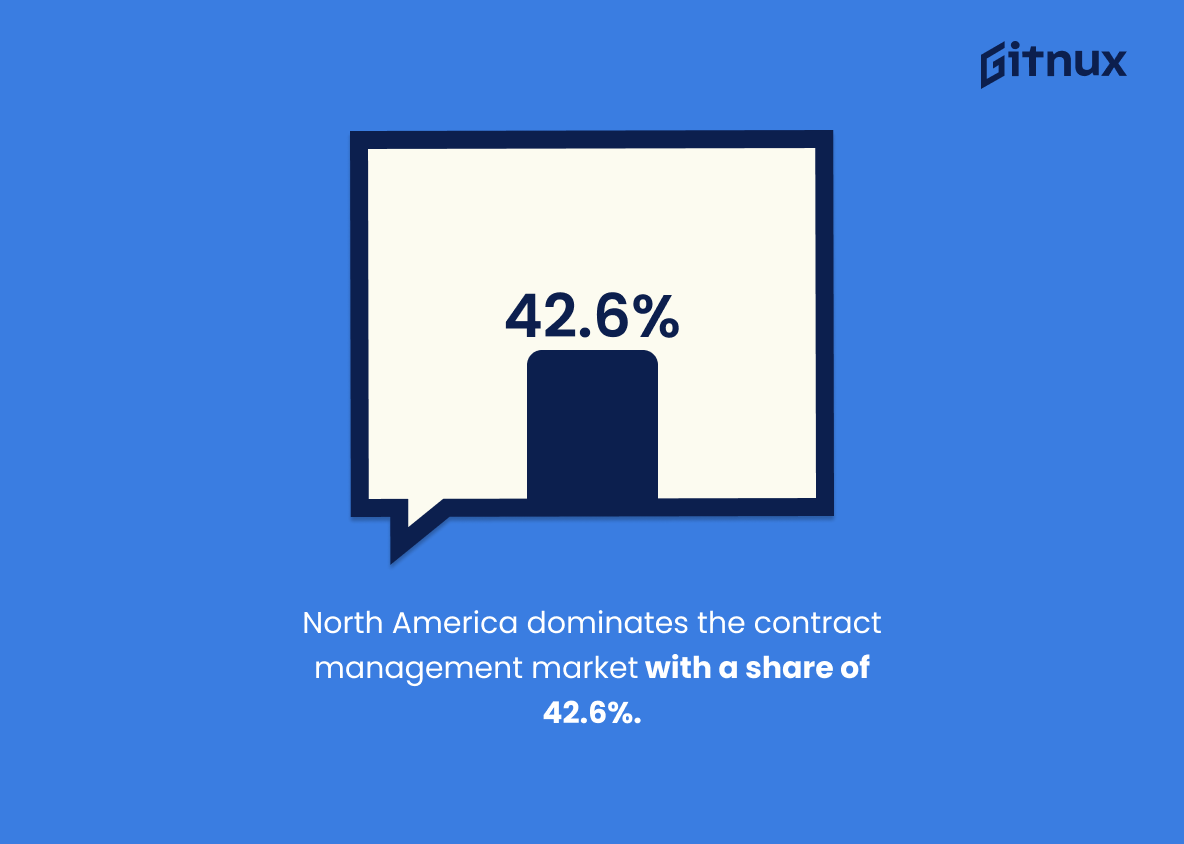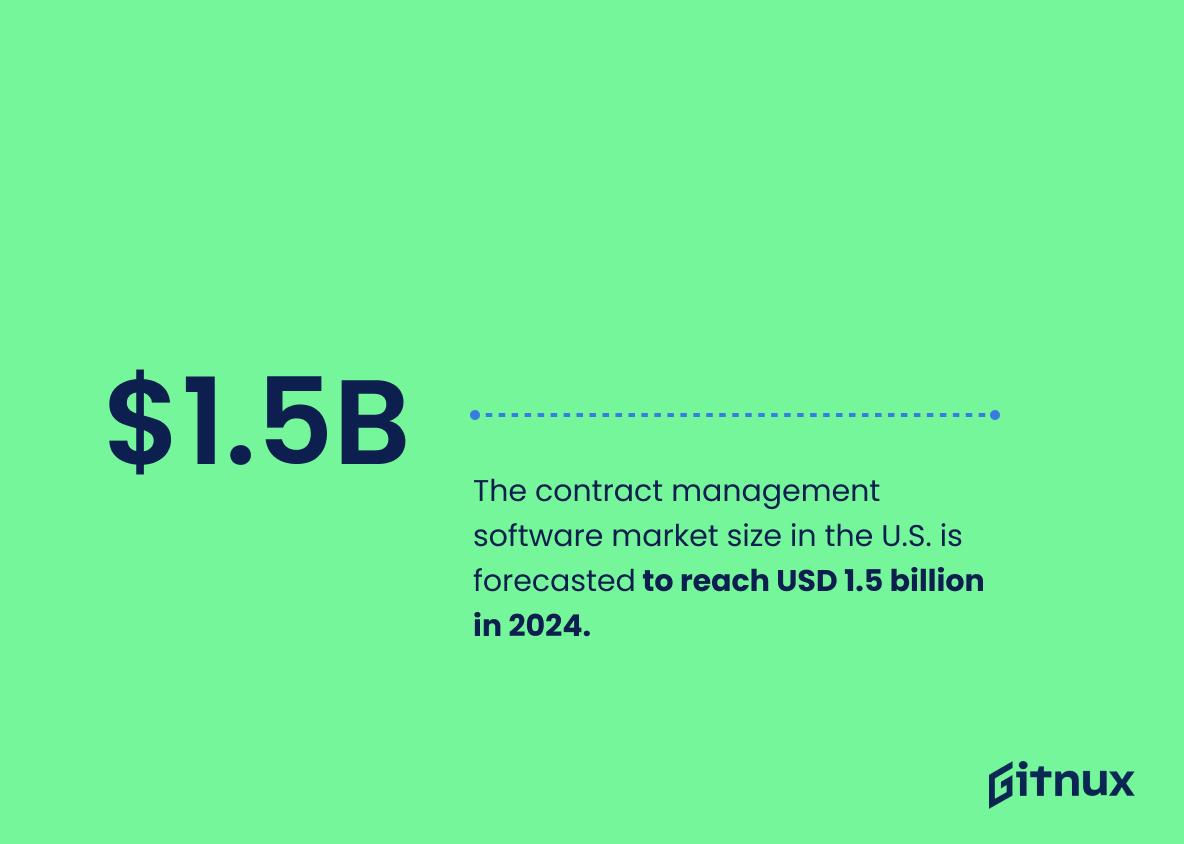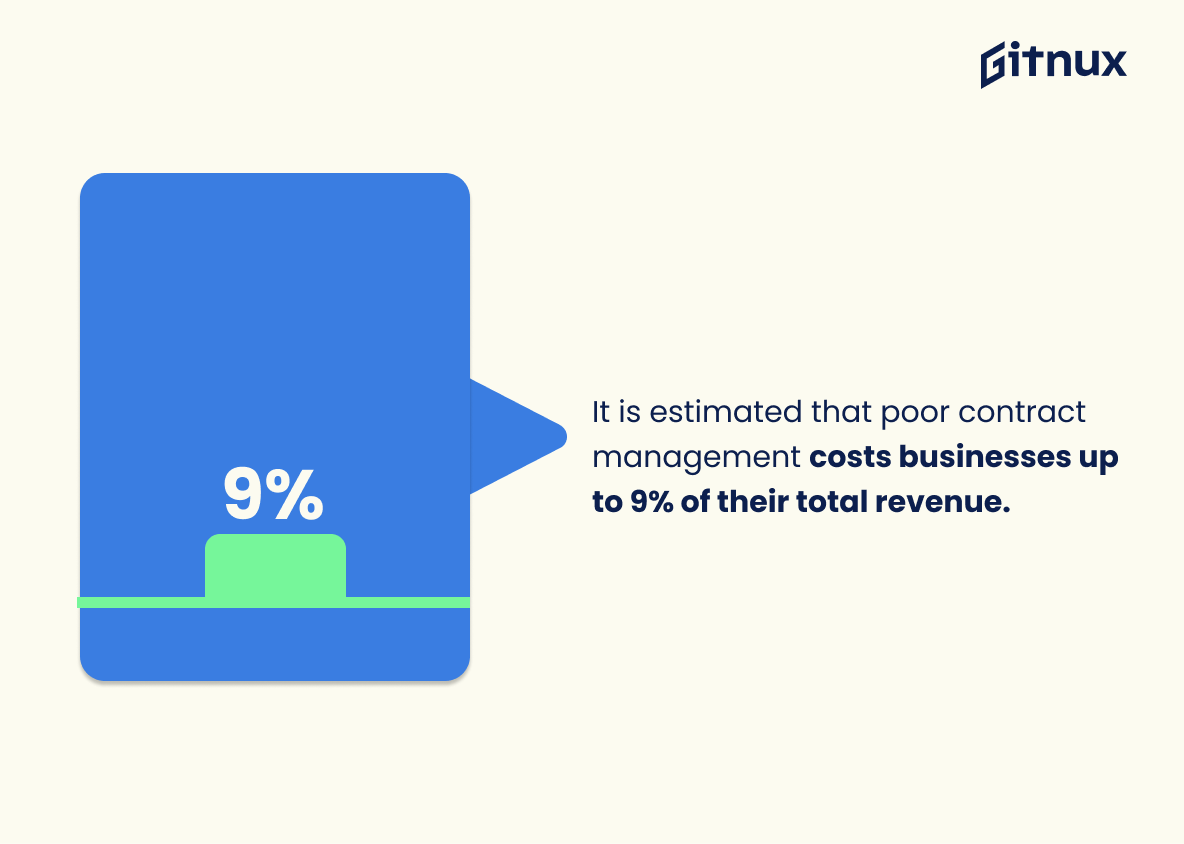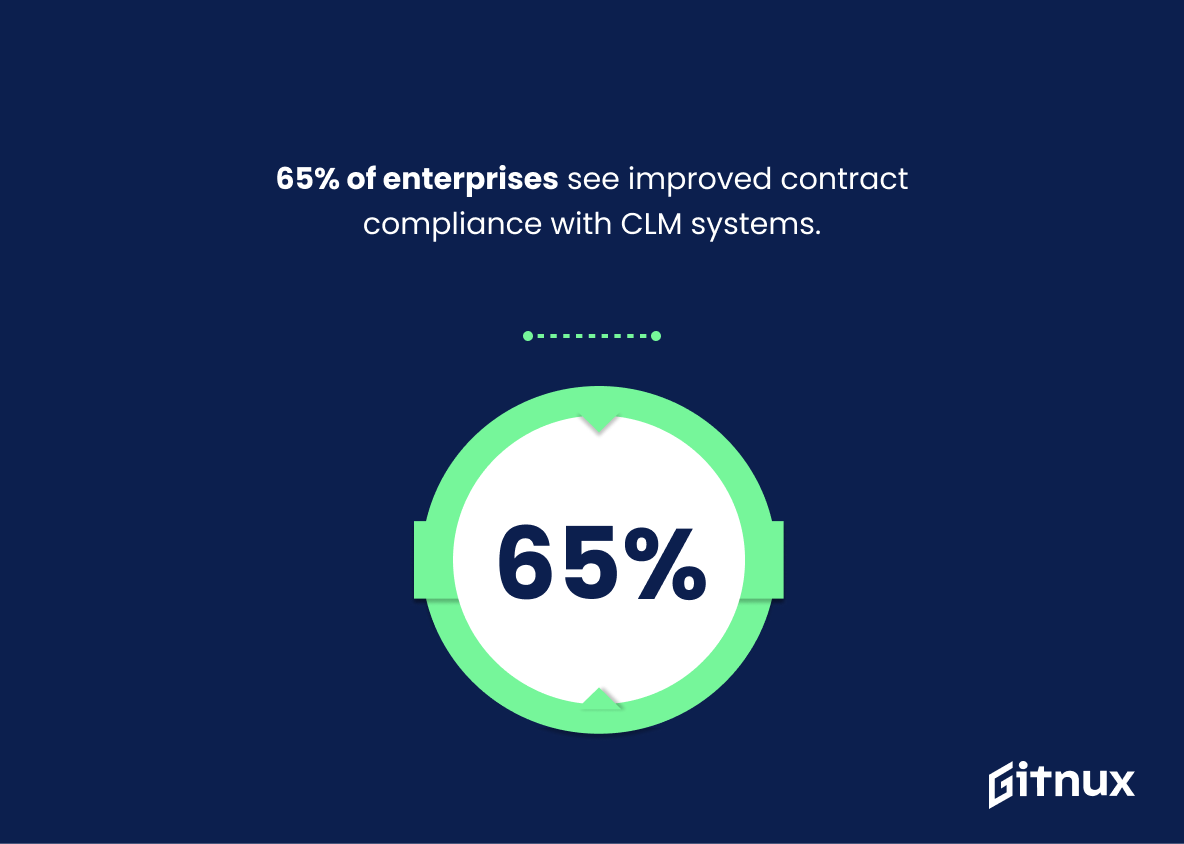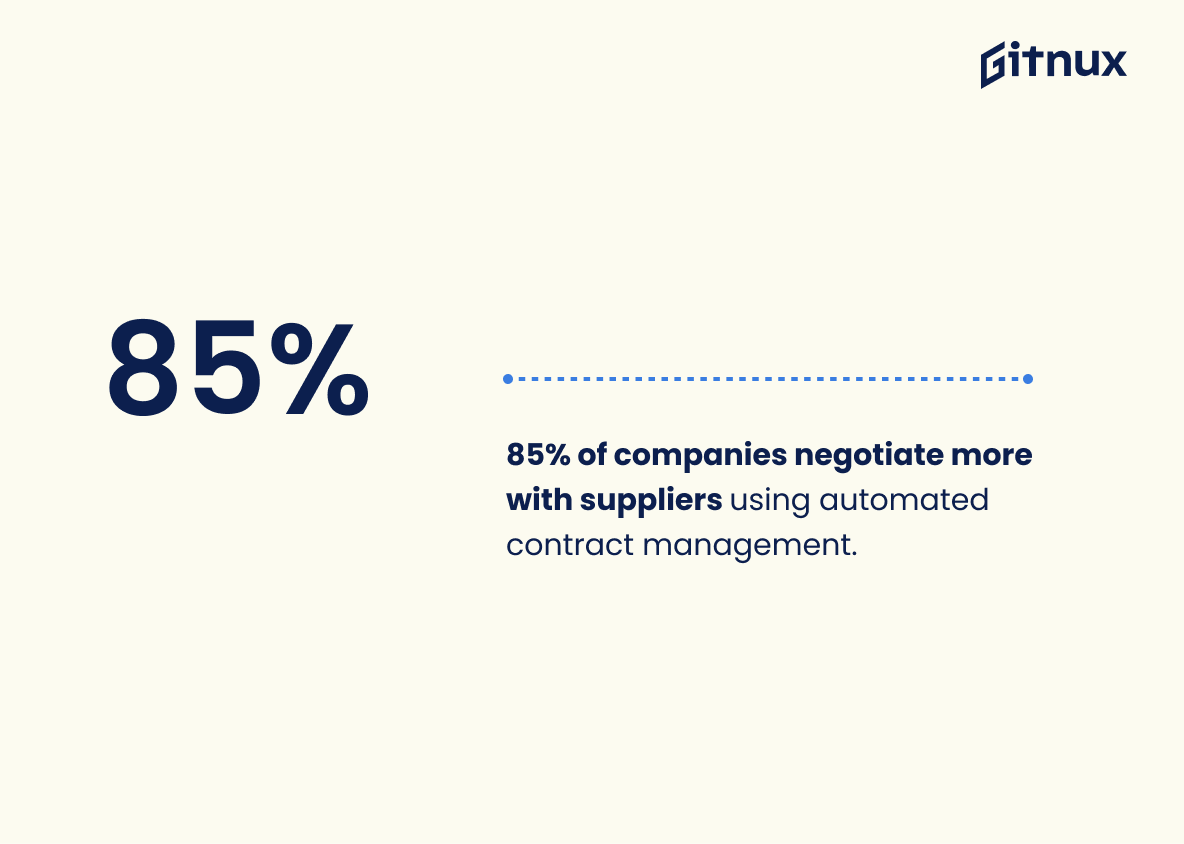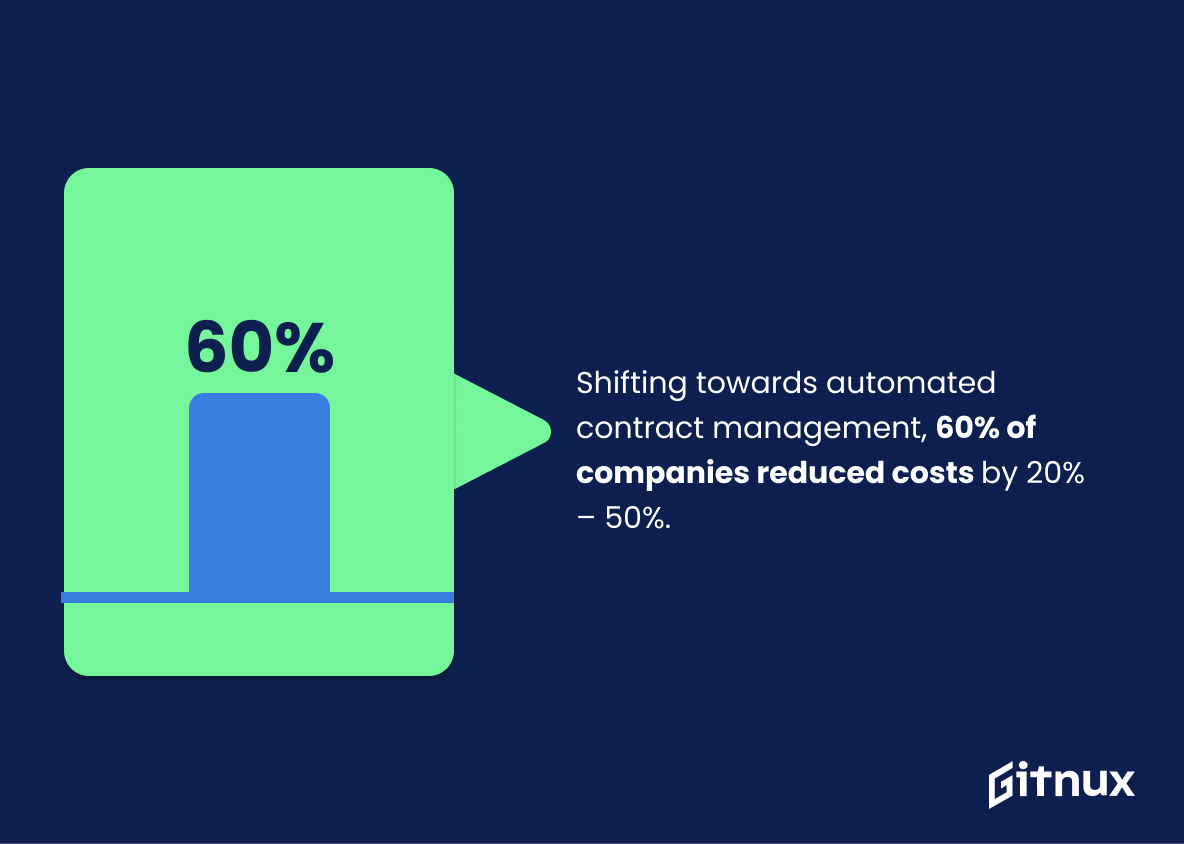In today’s complex and ever-evolving business landscape, effective contract management has emerged as a crucial component for ensuring organizational success. Immense volumes of agreements, partnerships, and deals are inked daily, constituting the backbone of arguably any industry. Consequently, comprehending the latest trends, statistics, and facts in the contract management industry can pave the way for improved operational efficiency and risk mitigation.
In our insightful blog today, we delve into this vibrant and dynamic world of contract management industry statistics, providing illuminating data that reveals its current standing, future potential, and undeniable influence on global businesses. Join us as we untangle and explore these compelling numerical narratives.
The Latest Contract Management Industry Statistics Unveiled
The global contract lifecycle management software market is expected to reach USD 2.4 billion by 2026, growing at a CAGR of 14.5%.
Forecasting an expansion to a whopping USD 2.4 billion by 2026, with a thriving CAGR of 14.5%, the global contract lifecycle management software market is proving to be an unstoppable locomotive of growth. This projection dramatically underscores the vitality and mounting scope of contract management in the current world. It paints a picture of not just a burgeoning field, but of an industry riding the exponential wave, armed with technology and streamlined processes.
The surging rate of growth transports us beyond mere figures, whispering a tale of a booming industry, its increasing acceptance and the trust placed by corporations globally. Furthermore, the impressive CAGR reflects the driving innovation and constant development of more superior solutions in this realm. So, if you’re a stakeholder, an investor, or simply an aficionado watching the contract management space, buckle up – it’s going to be quite a ride.
North America dominates the contract management market with a share of 42.6%.
Recognizing North America’s commanding presence in the contract management market, with a stout share of 42.6%, underlines its substantial influence and lead in the industry’s global landscape. It becomes evident that North America is the sector’s powerhouse – a vital hub for advancements, trends, and standards in contract management. By performing such an analysis of market share, it paints a comprehensive picture of geographical dominance, market trends and future predictions that are indispensable for framing strategies and business plans in the contract management industry.
The contract management software market size in the U.S. is forecasted to reach approximately USD 1.5 billion in 2024.
Navigating the future of the Contract Management Industry requires an understanding of its financial footprint. The predicted growth of the U.S. contract management software market to around USD 1.5 billion by 2024 serves as a compass, pointing to a steady demand for these tools. This likely upswing in the market’s growth potential sets a concrete foundation for optimism and prosperity within the sector.
The prediction captures the monetary significance of these digital solutions in transforming contract processes, revealing key insights that can be mined for strategies to tap into this burgeoning marketplace. The anticipation of such growth could spur companies to innovate and advance, further fueling the industry’s evolution.
It is estimated that poor contract management costs businesses up to 9% of their total revenue.
Picture this: You’re on a leaky ship, and every bucket of seawater you toss out is immediately replaced by 9% more. It never stops, and you never gain ground. This is the exact scenario businesses are finding themselves in, with poor contract management purportedly bleeding them of up to 9% of their total revenue. In the realm of contract management industry statistics, this is a jarring realization — a warning flag hoisted high for all businesses to retrospect.
It shines a stark light on the critical importance of streamlined contract management procedures, underpinning the dire need for robust strategies, systems, and skills to thwart this relentless revenue drain. It’s clear that in the battle for profit maximisation, well-managed contracts could indeed be the hero companies didn’t know they needed.
65% of enterprises report that contract lifecycle management (CLM) systems have improved their contract compliance.
Broadly acknowledged by a resounding 65% of enterprises, the transformative power of Contract Lifecycle Management (CLM) systems in enhancing contract compliance illustrates profound real-world impacts. This insightful statistic serves as a lantern, illuminating the direction in which the Contract Management Industry is moving. It underscores the growing dependency on CLM systems that enterprises are embracing, thus revealing the system’s value within the sector.
By conveying the system’s effectiveness in improving contract compliance, this statistic packs a potent message for prospective users and skeptics alike, emphasising the potential for greater success. Consequently, this foresight possibly cultivates confidence and urges investment in CLM systems, thereby shaping the future dynamics of the Contract Management Industry.
Only 26% of organizations adopt a dedicated contract management tool, leaving 74% at potential risk.
Surprisingly, a paltry 26% of organizations have harnessed the power of a dedicated contract management tool. This stark reality highlights a massive organizational gap, leaving a whopping 74% of companies in a precarious position. Such a significant number subtly unravels the immense potential that the contract management industry possesses and the untapped opportunities lying dormant therein.
It’s a wake-up call demanding more attention to be placed on integrating these tools into business operations. If not heeded, companies will remain vulnerable, unshielded from the avoidable risks associated with contract mismanagement.
Manual contract management processes cost businesses 20% more compared to those using contract management software.
In the realm of contract management, financial efficiency forms the backbone of business success. The compelling statistic that businesses employing manual contract management processes incur 20% more costs than those using contract management software illustrates a significant fissure in operational efficiency. This statistic is a neon sign pointing towards the considerable economic advantage of adjusting to technological advancements.
Posting this in a blog about Contract Management Industry Statistics helps enlighten readers about potential cost-saving strategies while underlining the accelerating shift towards digitisation in the industry. It not only speaks volumes about the importance of software adoption but also nudges forward-thinking firms to reassess their current practices and embrace technological integration for a competitive edge.
85% of companies surveyed saw a higher degree of negotiation with suppliers after implementing automated contract management.
Illuminating a significant shift within the industry, the statistic – 85% of companies witnessed an uptick in supplier negotiations after automating contract management – really paints the picture of the dynamic role of technology. In the realm of a blog post about Contract Management Industry Statistics, this insight is akin to a lighthouse, navigating readers through the waters of digital transformation.
This upward trend in negotiation isn’t just a number, it’s a narrator, recounting the story of how automation can effectively unlock new dimensions of supplier relationships. It signals that technology isn’t simply replacing manual work, but opening a gateway to superior contract management practices, with negotiations being one of the core arenas.
Moreover, the fact that a resounding majority of companies experienced this change cements the potency of automation, adding credibility to the prophecy of a more efficient, technology-integrated contract management future. Therefore, it’s not just a statistic, but a testimony to the transformative potential of automation in the contract management industry.
Shifting towards automated contract management, 60% of companies reduced costs by 20% – 50%.
Infusing life into the standard narrative of Contract Management Industry Statistics, the pivotal insight that 60% of companies adopting automated contract management experienced a cost reduction of 20% – 50% emerges as a game-changer. Not merely a percentage on a page, this statistic corroborates the transformative potential of automation – a torchbearer of efficiency and profitability in contract management.
The economic benefit of this evolution, captured in double-digit cost reduction, becomes a powerful testament to the mounting significance of technology in ameliorating contemporary contract management practices and paving the path for leaner, agile business operations. Thus, automation in contract management, as underlined by this statistic, appears as an indispensable weapon in a company’s arsenal, beaming with potential for cost optimization.
56% of companies that used contract management software increased contract speed by 20% – 40%
Delving into the realm of Contract Management Industry Statistics, it becomes fascinating to highlight that a significant 56% of companies, that have embraced the use of contract management software, noted a 20% – 40% acceleration in their contract speed. Reflecting upon this intriguing data point, it’s possible to discern the tangible impact that such technology can have on a company’s efficiency.
It underscores how the digital transformation within the industry is not just a fad, but a catalyst for substantial productivity enhancements. Consequently, this specific fact could potentially be a major deciding factor for companies on the fence about integrating contract management software within their operations. After all, in the fast-paced world of today, time is money.
Companies using contract management software reduce the time spent on administrative tasks by an average of 40%
An aha moment in the world of contract management lies in this impressive statistic: a whopping average of 40% time reduction on administrative tasks is achieved when companies adopt contract management software. This stunning revelation casts a spotlight on the tremendous efficiencies and productivity benefits that the software brings.
Picture this: resources are liberated from the drudgery of mundane chores and thus available to focus on strategic endeavors that fuel growth. In the ever-evolving sphere of contract management, this statistic stands as a testament to the potential bold transformations offered by the right technological tools.
According to a Gartner report, by 2023 more than 60% of large enterprises will have automated contract examination for increased accuracy in reviewing contracts.
Painting a picture of the future landscape of the contract management industry, this Gartner report projects a dramatic shift towards automation in the examination of contracts by larger enterprises. The prediction signifies a focal integration of automation, spotlighting a more than 60% adoption rate anticipated by the year 2023. This looming change emphasizes not only the growing reliance on technology within major corporations, but also the industry’s dedication to augment accuracy in contract review processes.
Consequently, these transformations will inevitably redefine the norms of contract management, pulling the industry into a new technological and efficiency-oriented era. The statistic serves as a crystal ball for those involved in this industry, allowing them to anticipate shifts and stay ahead of these potential disruptive changes.
On average, a typical contract lifecycle entails a 12.4 step process that is reduced to 6.2 steps with automation.
Diving headfirst into the uncharted waters of the Contract Management Industry, you are met with an astonishing sight – a typical contract lifecycle requires 12.4 steps on average. That’s a wave of procedures, checks, and balances to navigate. However, the horizon offers a silvery lining of automation, which magically halves the journey to just 6.2 steps. This dramatic reduction represents an undeniable windfall for time, resource allocation, productivity, and cost efficiency.
Imagine the hours saved, the headaches soothed, and the profit margins improved. It’s like finding a treasure chest of streamlining possibilities at the heart of the vast ocean of contract management. Simply put, the introduction of automation is the compass that guides us to a more efficient and hassle-free voyage through contract lifecycle.
47% of businesses say standardizing and controlling the process is the top benefit of contract management.
Highlighting that nearly half of all businesses consider standardization and process control as paramount advantages of contract management brings to the forefront the crucial role it plays in fostering corporate orderliness. In the swirling ecosystem of contract management industry statistics, this specific figure lights the beacon for efficiency and consistency. The statistic reflects how businesses perceive a well-oiled contract management system not merely as a legal requirement, but also as an organizational tool that standardizes processes, thereby raising the industry standards.
Additionally, it underlines the importance of control in mitigating risk, streamlining operations, and enhancing accuracy in contract execution, laying the groundwork for renewed trust and confidence in the industry overall. In that sense, the 47% is not a mere number. It’s a testament to the industry’s capacity, marking out a path towards a surprisingly exciting future full of impeccably standardized, flawlessly controlled contract management processes.
Businesses that use contract management software reported a 50% less discrepancy rate in contractual obligations.
Navigating the ocean of the Contract Management Industry, this statistic serves as a lighthouse, illuminating key insights and potential advantages for businesses. A 50% reduction in discrepancy rate in contractual obligations among businesses using contract management software is not just a number, but a testament to increased efficiency and accuracy these tools can bring.
Reduced discrepancies mean reduced risks, enhanced performances, and improved vendor relationships. In the labyrinth of complex contractual landscape, this statistic is a guide that points towards the beacon of enhanced accountability, reliability, and transparency. Hence, it is a vital compass every business should consider while making decisions about investing in contract management software.
Conclusion
Extracting key insights from the Contract Management Industry statistics, it is evident that this sector holds a critical role in the business spectrum. With a notable surge in technological integration, market valuation, and increased demand for efficiency in contract lifecycle management, the contract management industry is poised for substantial growth in the future.
As businesses continue to recognize the cost and time-saving benefits, contract management systems could very well become a standard in every industry. By staying informed with the latest trends and statistics, organizations can effectively streamline their contract management processes, gain a competitive edge, and optimize their overall business performance.
References
0. – https://www.www.kofax.com
1. – https://www.www.prnewswire.com
2. – https://www.www.beroeinc.com
3. – https://www.www.gartner.com
4. – https://www.www.reportsanddata.com
5. – https://www.info.aiim.org
6. – https://www.www.statista.com
7. – https://www.www.businesswire.com
8. – https://www.www.capgemini.com
9. – https://www.www.process.st
10. – https://www.www.grandviewresearch.com
11. – https://www.www.cobblestonesoftware.com
12. – https://www.www.cips.org

